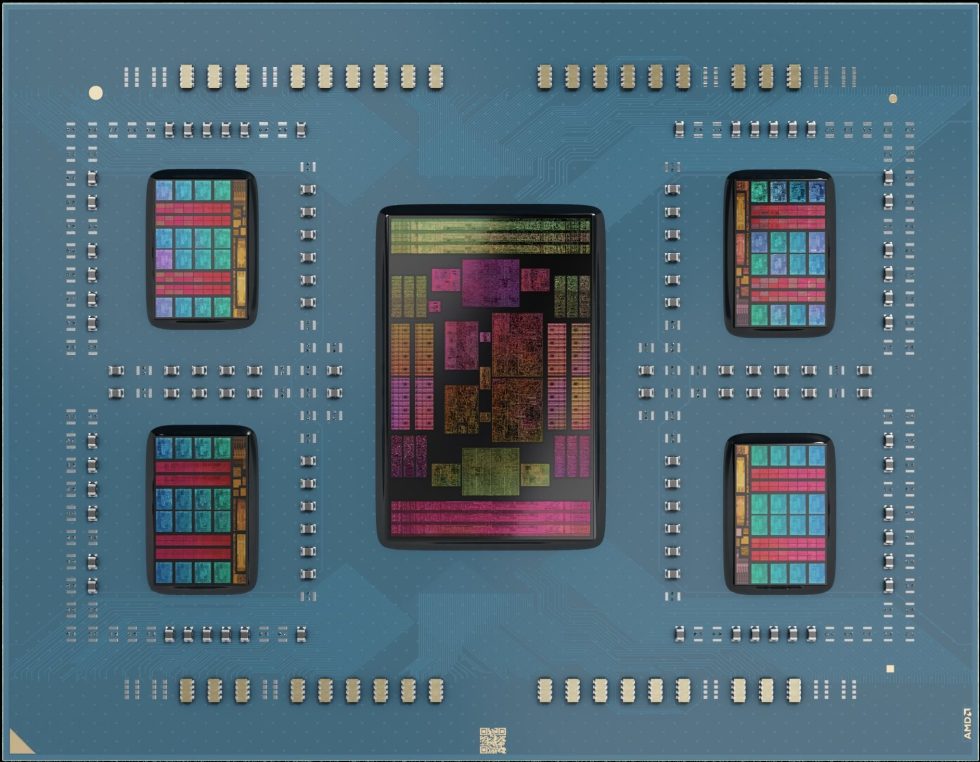AMD has presented new performance data shortly before the release of its 5th generation of EPYC processors, known as “Turin”. These chips are based on the Zen 5 architecture and show a significant increase in performance compared to the previous generation, which is based on the Zen 4C architecture. The available data compares the EPYC 9755, the flagship of the Turin series with 128 cores, with the EPYC 9754, the flagship of the Bergamo series, which also has 128 cores, reported HXL (@9550pro) via X.
The EPYC 9755 processor is based on 128 Zen 5 cores and 256 threads. It has a base clock of 2.70 GHz and can accelerate up to 4.10 GHz. In comparison, the EPYC 9754 offers the same number of cores, but is based on the older Zen 4C architecture. The differences in architecture lead to a significant difference in performance in the benchmarks performed.
One major difference lies in the cache design. The EPYC 9755 has a total of 650 MB of cache, divided into 512 MB L3, 128 MB L2 and 10 MB L1. In contrast, the EPYC 9754 offers a total of 496 MB of cache, consisting of 384 MB L3, 96 MB L2 and 6 MB L1. These additional cache resources in the EPYC 9755 contribute to improved performance.
The benchmark tests were conducted using the 7-ZiP application. The EPYC 9755 achieved a maximum data rate of 346,000 KB/s in the compression tests with a rating of 395.969 GIPS (Giga Instructions Per Second). In the decompression tests, the maximum data rate was 4,445,000 KB/s with a rating of 395.525 GIPS. The average performance was 394.705 GIPS.
In comparison, the EPYC 9754 achieved a maximum data rate of 171,000 KB/s in the compression tests with a rating of 195.572 GIPS. In the decompression tests, it achieved a maximum data rate of 2,221,000 KB/s with a rating of 197.638 GIPS. The average performance of the EPYC 9754 was 196.775 GIPS. These results show a significant performance increase of the EPYC 9755 over the EPYC 9754, even though both processors have the same number of cores.
The following table summarizes the most important technical data and benchmark results of the two processors:

These results prove that the new Zen 5 architecture in the EPYC 9755 enables a significant improvement in performance, especially in data compression and decompression. This shows the potential of the new generation of processors for applications that require high computing power.
Source: HXL (@9550pro) via X

































2 Antworten
Kommentar
Lade neue Kommentare
Mitglied
Urgestein
Alle Kommentare lesen unter igor´sLAB Community →